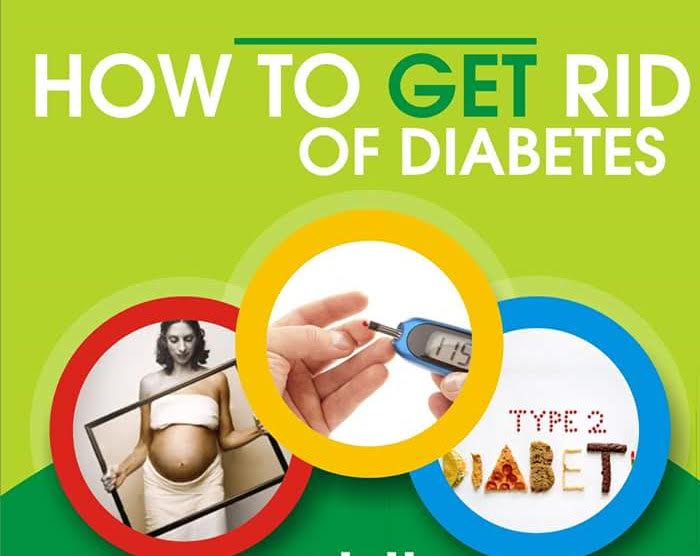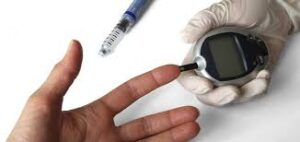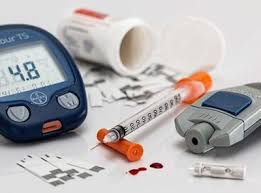How to tell You Have Diabetes

How to tell You Have Diabetes: A significant and widespread medical disorder is diabetes. Diabetes is a chronic condition that develops when the body either generates insufficient insulin or cannot properly utilize the insulin that is produced. If you have diabetes, you must constantly control and check your blood sugar levels to make sure they’re within a target range. Immediately seek medical advice if you think you might have diabetes. Enough Info

There are two main types of diabetes: type 1 and type 2.
Type 1 diabetes is a chronic autoimmune condition usually diagnosed in childhood or adolescence.
- With type 1 diabetes, your pancreatic islet cells can no longer create insulin; this autoimmune illness renders them inoperable. How To Deal With Anxiety(2023)
Type 2 diabetes, which typically develops in adulthood, occurs when your body stops responding to insulin, a hormone produced by your pancreas, that helps your cells take in sugar from your blood.
- Type 2 diabetes has more to do with lifestyle (relating to lack of exercise and consuming too much sugar). In order to receive treatment as soon as possible if you do have the condition, it is critical to be aware of the warning signs and symptoms of diabetes as well as how it is identified.
The only way to know for sure that you have diabetes is to get tested. The most common tests are the A1C test and the plasma glucose test. This article will take a closer look at the warning signs of type 1 and type 2 diabetes, testing options, and treatments. How To Stop Snoring(Steps and requirements)
Read Also: How To Build Self-Esteem
Warning signs of diabetes
Chronically elevated blood sugar levels harm your cells and organs more, which leads to worsened symptoms over time in diabetes. If these warning indicators are moderate at first, you might not notice them. Compared to type 1 diabetes, type 2 diabetes symptoms typically manifest more gradually.
Diabetes may have no symptoms at all in its early stages. You should see a doctor as soon as you become aware of any possible diabetes warning signals. Diabetes can seriously harm your body’s tissues and organs if it is not addressed.
Early signals of danger
Some symptoms of type 1 and type 2 diabetes are similar, while others are different. If you experience any of the basic warning signs of diabetes listed below, the Centers for Disease Control and Prevention (CDC) advises scheduling blood sugar tests with your doctor:
- Fuzzy vision
- Tingling or numbness in your feet and hands
- Fatigue
- Really itchy or dry skin
- Wounds that take a while to heal
- Severe thirst
- Many trips to the bathroom, especially at night
- Unintended loss of weight
- Increased appetite
Read Also: How To Stop Snoring(Steps and requirements)
Additional indications of type 1 diabetes
The signs and symptoms of type 1 diabetes might appear within a few weeks or months. Despite the fact that it can happen at any age, it is typically diagnosed in children and young people. Most often, children between the ages of 4 and 6 and 10 and 14 are diagnosed with it.
Ketones build up in the bloodstream as a result of undetected diabetes, which can result in flu-like symptoms. Diabetic ketoacidosis is the name given to this condition. This situation is a medical emergency that has to be treated right away. How To Take Care Of Your Eyes
A youngster may also suffer additional symptoms in addition to those listed below, such as:
- Unplanned, unforeseen weight loss
- Having a history of sleeping dry, wetting the bed
- A prepubescent girl with a yeast infection
- Breath with a fruity odor
- Nausea, vomiting, and other flu-like symptoms
- Breathing while becoming unconscious
Additional indications of type 2 diabetes
Type 2 diabetes symptoms typically manifest more gradually than type 1 diabetic symptoms. Type 2 diabetes can emerge over a number of years. The warning symptoms may be subtle, according to a reliable source. It’s also conceivable for there to be absolutely no telltale symptoms at all. Instead, you might be given a diabetes diagnosis following a visit to the doctor for:
- chronic infections or a wound that heals slowly
- tingling or numbness in your feet or hands
- heart issues
Certain health issues, which can also be diabetes symptoms, are more likely to arise in type 2 diabetics.
Let’s examine each of these problems in greater depth.
Fuzzy vision
One of the initial signs of diabetes can be the blurry vision. Your lens may expand and impair your vision if you have high glucose levels in your eyes. The retina and the nerves that are essential for your eyesight can be harmed over time by high glucose levels. A quick drop in blood sugar might also result in sudden fuzzy vision. Diabetes also makes you more likely to develop glaucoma and other eye diseases that can lead to blurred vision. How To Quit Smoking(Steps and Requirements)
Diabetic nerve damage
A potentially dangerous consequence of type 2 diabetes is diabetic neuropathy. Damage to the nerves due to diabetes is known as diabetic neuropathy. Your hands and feet may experience tingling, discomfort, or weakness as early signs. Your ability to sense pain in your extremities may diminish as it worsens, which increases your risk of acquiring illnesses like diabetic ulcers.
Tiredness, thirst, and hunger
Being unable to metabolize blood glucose causes many people with type 2 diabetes to feel hungry and exhausted. To remove extra sugar from your blood, your kidneys must work harder, which can result in frequent urine and thirst.
Read Also; How To Quit Smoking(Steps and Requirements)
Infections and lowered immunity
Blood sugar levels that are too high all the time can impair the immune system. Infectious infections are more likely to affect people with type 2 diabetes. Diabetes patients frequently have yeast infections. Infections with oral thrush are more common in people with diabetes.

Just how is diabetes identified?
Many people undergo diabetes testing as a result of developing symptoms that could be early warning indications. People with type 1 diabetes, for instance, may unintentionally lose weight or experience flu-like symptoms. A severe thirst or frequent urination may be experienced by those with type 2 diabetes. One or more of the diabetes warning signals can be present in you. It’s crucial to schedule a visit with your doctor if you do. Additionally, your doctor can diagnose you with diabetes after you’ve gone in for routine blood testing or another issue. How To Stop Bleeding(steps and Requirements)
If you schedule a visit with your doctor because you have diabetes warning signs, they will ask you:
- Your signs
- History of the family
- Prescription drugs you’re taking
- Any allergies you may have
Your doctor will inquire about your symptoms and perhaps order some bloodwork.
The diagnosis of diabetes can be made using a number of tests. These consist of:
A1C:
This test reveals the average blood sugar level during the previous two to three months. You don’t need to abstain from food or liquids to do this.
Fasting plasma glucose (FPG):
You must go at least 8 hours without eating or drinking before this test.
The oral glucose tolerance test (OGTT):
lasts two to three hours. After consuming a specific sweet drink, your blood glucose levels are first checked, then they are checked again at regular intervals over the following two hours.
Random plasma glucose test:
You are not need to be fasting for this test and it can be performed at any time.
Having a list of questions prepared for your doctor to answer about your warning signs and any worries you have about other medical conditions is also beneficial.
Read Also: How to Get Rid of Body Odor(2023)
Diagnosing and treating diabetes
There are many different approaches to treating diabetes. No matter what type of diabetes you have, maintaining a healthy diet, engaging in regular exercise and careful monitoring is essential. You will require insulin for the rest of your life if you have type 1 diabetes. This is a result of your pancreas failing to create enough insulin for your body. How to remove paint from clothes (2023 Review)
If you have type 2 diabetes, lifestyle modifications like diet, weight loss, and exercise may help you manage your condition. To control your blood sugar levels, you might also need to take oral or injectable drugs like metformin or insulin. You must carefully monitor your diet if you have type 1 or type 2 diabetes to keep your blood sugar levels from rising too high. In general, this entails monitoring your carbohydrate intake and avoiding overly processed, low-fiber foods like:
- Sweetened morning cereals
- White rice
- Fruit juices
- Processed snack foods packaging
- Yogurt with a fruity taste
- Coffee drinks with flavor
- Sweetened sodas
- Breakfast cereal with added sugar
- Pasta and white bread
What constitutes a diabetes risk factor?
Type 1 and type 2 diabetes both have a few risk factors. Even adults, though it’s uncommon, can get type 1 diabetes; this is not a complete list. How To Build Self-Esteem
Type 1
Risk Factors
- Children
- Youthful adults
- Those with a close family suffering from type 1 diabetes
Type 2
RIsk Factors
- Ageing more than 45
- Gaining weight
- A sedentary way of life
- Cigarette smoking
- Having diabetes in the family
- An elevated blood pressure
Is it possible to stop diabetes?
Diabetes type 1 cannot be stopped.
By controlling your weight, being active, and eating a balanced diet, you may be able to lower your chance of having type 2 diabetes. Despite your best efforts, genetics and other risk factors may raise your risk.
It’s crucial to visit your doctor or a healthcare provider on a frequent basis if you have any diabetes risk factors. This will aid in preventing the progression of diabetes and the development of other severe health issues. How to Stay Fit at Home
Read Also: How To Deal With Anxiety(2023)
Conclusion
Typically, type 1 diabetes is discovered in childhood. Unintentional weight loss, bedwetting, and flu-like symptoms are common early warning signs. Adulthood is when type 2 diabetes is more likely to be discovered. Extreme thirst, frequent urination, and slowly healing wounds can all be early indications.
Diabetes often has modest or undetectable early symptoms that worsen over time if left untreated. One or more blood tests can be used to confirm a diabetes diagnosis. If you think you might have diabetes, consult your doctor. Controlling your symptoms and avoiding more serious health issues depends on taking control of your illness and treating it efficiently.
FAQs & Answers
How can tell I have diabetes?
Diabetes frequently causes increased hunger, thirst, and urination.
Can energy loss and feeling hungry shortly after eating be symptoms of diabetes?
Diabetes is characterized by polyphagia, or increased or excessive appetite, however, it is uncommon for diabetes to be accompanied by weariness. Increased urination, increased thirst, and increased hunger are just a few of the signs of diabetes.
Which organ is first affected by diabetes?
Blood vessel damage most frequently affects the eyes, heart, nerves, feet, and kidneys. Let’s examine how this harm occurs. Eyes. The tiny blood vessels in your eyes can become damaged if you have high blood sugar levels for an extended period of time.
Which organ is responsible for diabetes?
The pancreas is an organ in your body that produces the hormone insulin, which controls blood sugar levels. Diabetes, the condition in which your blood sugar or glucose levels are too high, can occur when your body produces insufficient insulin or when insulin doesn’t function properly in your body.
It is defined by high levels of blood
If any of these tonerin rossmann ára symptoms take place, look for instant medical help.
glucose, which can bring about major wellness issues if left neglected.




